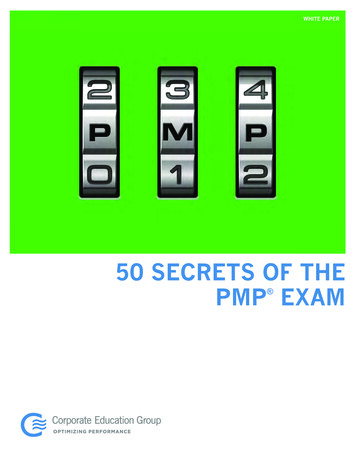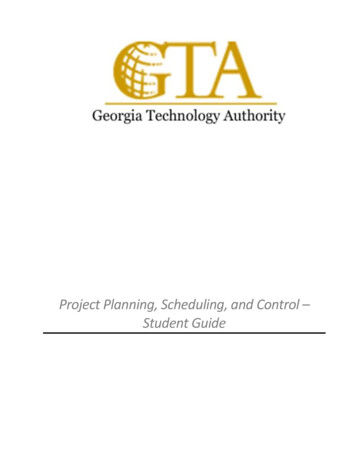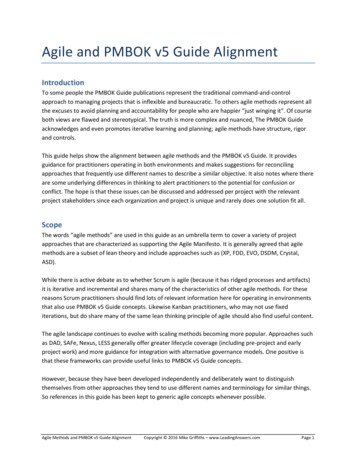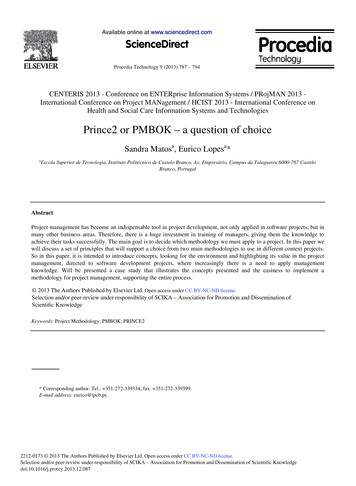
Transcription
Available online at www.sciencedirect.comScienceDirectProcedia Technology 9 (2013) 787 – 794CENTERIS 2013 - Conference on ENTERprise Information Systems / PRojMAN 2013 International Conference on Project MANagement / HCIST 2013 - International Conference onHealth and Social Care Information Systems and TechnologiesPrince2 or PMBOK – a question of choiceSandra Matosa, Eurico Lopesa*aEscola Superior de Tecnologia, Instituto Politécnico de Castelo Branco, Av. Empresário, Campus da Talagueira 6000-767 CasteloBranco, PortugalAbstractProject management has become an indispensable tool in project development, not only applied in software projects, but inmany other business areas. Therefore, there is a huge investment in training of managers, giving them the knowledge toachieve their tasks successfully. The main goal is to decide which methodology we must apply to a project. In this paper wewill discuss a set of principles that will support a choice from two main methodologies to use in different context projects.So in this paper, it is intended to introduce concepts, looking for the environment and highlighting its value in the projectmanagement, directed to software development projects, where increasingly there is a need to apply managementknowledge. Will be presented a case study that illustrates the concepts presented and the easiness to implement amethodology for project management, supporting the entire process. 2013 TheAuthorsPublishedbybyElsevierElsevier Ltd.access underCCpeer-reviewBY-NC-ND license. 2013PublishedLtd.OpenSelectionand/orunder responsibility ofSelection CENTERIS/ProjMAN/HCIST.and/or peer-review under responsibility of SCIKA – Association for Promotion and Dissemination ofScientific KnowledgeKeywords: Project Methodology; PMBOK; PRINCE2* Corresponding author. Tel.: 351-272-339334; fax: 351-272-339399.E-mail address: eurico@ipcb.pt.2212-0173 2013 The Authors Published by Elsevier Ltd. Open access under CC BY-NC-ND license.Selection and/or peer-review under responsibility of SCIKA – Association for Promotion and Dissemination of Scientific Knowledgedoi:10.1016/j.protcy.2013.12.087
788Sandra Matos and Eurico Lopes / Procedia Technology 9 (2013) 787 – 7941. IntroductionThis paper addresses the question of how organizations can best support their IT project managers ingaining critical project management knowledge and skills. Traditionally, management development initiativeshave included interventions such as formal training programs, performance appraisals and managementcoaching. Additionally, in the project context, post project reviews provide a significant occasion for anorganization to facilitate the learning of project managers and team members from their project experiences.So, methodology can be understood as a definition of a simply group of tasks or something formal. Thedeveloper team can create their own methodology or can apply another already created by others [1].However, the most important thing is the chosen methodology, covers all the identified requirements ofthe new project to build. In the end, the methodologies are an indispensable tool used in project management,which allow measure the progress and tasks control [2, 3].A brief review for the most popular methodology among the companies and organizations with theobjective to develop a software project we found PMBOK – Project Management Body of Knowledge andPrince2 – Projects In Controlled Environments.In this study, we focus on the key knowledge and skills that experienced IT project managers view ascritically important in order to manage their projects effectively, and we explore the avenues by which thesemanagers have developed these skills and knowledge in the course of their careers. By examining bothPMBOK and Prince2 what the critical skills are from the perspective of case study project, we are able toprovide recommendations on effective development and training programs for the next generation of IT projectmanagers.In the next section, we overview the key knowledge areas and competencies identified in the literatureas important for both methodologies, and then discuss both general management and development interventionsand the potential of project reviews as a development tool. Following this, we present the method for thecurrent study, and results and discussion.2. Literature ReviewThere is now an extensive professional literature providing guidelines and frameworks for best practice inproject management. The Project Management Institute [4] provides a series of professional certificationsbased on the standards set out in its Project Management Body of Knowledge (PMBOK). PRINCE [5] wasfirst developed by the CCTA in 1989. Since its introduction, PRINCE has become widely used in both thepublic and private sectors and is now the UK's de facto standard for IT project management.2.1. Introduction to PMBOKThe PMBOK was created by the PMI (Project Management Institute), to ensure a set of knowledgeprinciples in project management. The purpose is to guide a project manager to fulfil successfully a project [4].The PMBOK is a detailed framework of nine knowledge areas, broken down into activities across five stages orprocess groups of the project life cycle, that are claimed to encompass the sum of knowledge generallyrecognized as good practice in the project management profession. In addition to these detailed knowledgeareas, tools and techniques, PMBOK also notes that effective project management requires an understanding ofthe application area, the project environment, general management knowledge and skills, and interpersonalskills.Accordingly with PMBOK [4] Project Management Body of Knowledge describes the sum ofknowledge for the profession of project managers.The PMI's creation was in 1969 with the objective of serving the interests of the industry of projectmanagement. It is actively involved in setting standards for this practice. The principle of PMI is based on the
Sandra Matos and Eurico Lopes / Procedia Technology 9 (2013) 787 – 794789idea that the tools and techniques of project management are common even among projects of the softwareindustry and the construction industry PMI [4].In 1981 the direction of PMI authorized the development of what has come to become A Guide to theProject Management Body of Knowledge (PMBOK Guide), containing the standards and guidelines of practicemanagement, which are widely used in this role. First published in 1987, the PMBOK becoming a bestselleramong securities everlasting business management [4].The PMBOK Guide is approved as an American National Standard (ANS) by the American NationalStandards Institute (ANSI) [4].A handful of studies have examined the importance of specific skills for IT project management. Jiang,Klein and Margulis [6] looked at the extent to which a set of skills previously identified as important forsystems analysts were also important for IT project managers, and identified directing, managing andinformation seeking, identified as key skills. A subsequent study by Jiang, Klein and Chen [7] focused on theimportance of leadership skills for successful project outcomes, reinforcing the importance of the teamleadership competency. In a study that examined competencies of IT professionals in general, Bassellier andBenbasat [3] found that business competence, defined as organization-specific knowledge together withinterpersonal and management knowledge was a key skill for those IT professionals whose work involvessubstantial contact with business clients3. Introduction to PRINCE2PRINCE2, Projects in Controlled Environments, was created in 1989 by CCTA (the Central Computerand Telecommunications Agency), since then called by OGC (the Office of Government Commerce). It is amethod of project management structured based on experience gained in thousands of projects andcontributions of numerous sponsors, managers, project teams, academics, trainers and consultants [5].PRINCE was originally based on PROMPT, this is also a project management method created bySimpact Systems Ltd in 1975 and adopted by CCTA in 1979 as standard to be used by all Government projects[8]. Replacement of PROMPT happened when in 1989 it launched the PRINCE and this remains in the publicdomain. However, their rights are kept intact [5, 8].The first publication was in 1996, having contributed to it, a partnership of 150 European organizations.PRINCE and PRINCE2 are registered trademarks of the British Government [5, 8].The latest version of this methodology tries to approach a generic approach to become flexible to thepoint of shaping all types of design, i.e, it becomes a practical reference, possible to apply to any type ofproject, scale , organization, geography or culture. So it has become widely recognized as one of the methodsof project management more accepted [9].The main features of this methodology are based on the business focus, an organizational structuredirected to the project management team. The planning is done with orientation toward the final product and itsemphasis is on the division of the project into phases [4].Prince2 is the standard used by the English government and widely recognized and used in the privatesector, mainly in the UK.A PRINCE 2 project is driven by the project's business case [8], which describes the organization'sjustification, commitment and rationale for the deliverables or outcome. The business case is regularlyreviewed during the project to ensure the business objectives, which often change during the lifecycle of theproject, are still being met. PRINCE 2 is designed to provide a common language across all the interestedparties involved in a project. The method provides the necessary controls and breakpoints to work successfullywithin a contractual framework.
790Sandra Matos and Eurico Lopes / Procedia Technology 9 (2013) 787 – 7944. PMBOK versus PRINCE2Both methodologies [10, 11] set documentation which must be tailored to suit the occasion project. Forexample, PMBOK is not intended to tell people how to do any of the techniques or use any of the toolsdescribed. It only lays out the processes, how they link together and the tools and techniques that can beinvoked. Similarly, the application of PRINCE2 must be scaled for the size and needs of the particular project.To better understand these methodologies is necessary to understand their commonalities and theirdifferences. The project definition is distinct for both approaches. For the PMBOK project is a temporaryendeavour undertaken to create a product, service or result singular. To Prince2, the project is a managementenvironment created for the purpose of delivering one or more business products according to a specifiedbusiness case.Fig.1. Commonalities between both methodologiesThe PMBOK is recognized as an international standard IEEE Std 1490-2003, which provides thefundamentals of project management. The PRINCE2 is a structured method, considered a standard andrecognized in both the public and private sectors.The methodology or technique used by each is also distinct. The PMBOK is a descriptive methodology,ie, the detailed explanation of the techniques for project management, while the Prince2 bet in perspective,details how the techniques of project management should be structured and implemented [11].Fig.2. Characterization of both methodologiesAs one follows the orientation toward the processes used in developing the project, the other has aguideline the final product, focusing on the successful delivery and quality [10].
Sandra Matos and Eurico Lopes / Procedia Technology 9 (2013) 787 – 794Fig.3. Process versus Product orientation in both methodologiesThe project manager does not have the same relevance for both approaches: in the PMBOK projectmanager is the person responsible for meeting the goals, while for Prince2 is given the authority to run theproject manager always responding to the project board.For the PMBOK, are considered 5 groups of processes, while the Prince2 8 are considered. However, itis possible to find equivalences between processes. The Process of Home PMBOK is equivalent to the first twoprocesses of Prince2, ie Start and Direction. The Planning Process PMBOK embodies the same principles ofprocesses and Home Planning Prince2. Processes Execution / Control will be equivalent to three processgroups: the Control Phase, Managing Product Delivery and Direction. Finally, the process of locking design iscommon to both approaches [11].Fig.4. Processes in both methodologiesIt is also possible to identify, equivalence among variables considered in each of these methods.Understand as variable parameters identified for each project that allow you to perform the management.791
792Sandra Matos and Eurico Lopes / Procedia Technology 9 (2013) 787 – 794Fig.5.Variables in both methodologiesBoth PRINCE 2 and PMBOK [10, 11] support category addresses the project (product development)management by improved process management. Particularly the configuration management phase activities(depending upon the developing environment) in these standards are generally related to each other at higherlevel. It is almost impossible that one can have strong one-to-one mapping between these standards, because ofcontinuous process improvement strategy devised by PMBOK at project management level. However on thebasis of experience and assessment, the gap between these two can be narrowed to a reasonable extent.5. Case StudyIn order to answer the research question “What should be the choice: Prince2 or PMBOOK?” we adopta research case study, to following software development, which aims to optimize the time and resources toimplement them successfully. So, an industry partner needs streamline their processes, so that all the
Sandra Matos and Eurico Lopes / Procedia Technology 9 (2013) 787 – 794information is scattered before now concentrated in a single tool, to be more targeted treatment specialized.This company has a solid and well delineated, divided into different areas. Autonomy was given to eacharea to organize information, create tables in a common database and streamline their processes. So long, eachfield has evolved in itself. This evolution was always accompanied by a team of knowledgeable data structureof the company that advised and sought that this development would respect the rules defined by theorganization for creating tables and software development. The common, and therefore the starting point ofeach is the customer area, which includes the basic information of each customer. Previously there have beensituations where been identified needs to obtain information from one area to another use, taking into accountthat the database is common designs have been created for specific construction that enables software to gatherthe information necessary to give the other field.We identified the need to obtain the information from the customer's balance in all areas and gather thisinformation in one tool, allowing treatment of real information, using the global view. Once you realize thatthis problem difficult to obtain customer information and being very conducive to failure, it was decided tocreate a project that could bring together all the information in a single query point. Thus was created theproject STUDI, unified information system.Among the choices of the project manager, were present PMBOK and PRINCE2 methodologiesdescribed above. The important point to be considered is the role of the manager as the project is of greatimportance and responsibility, ie the company's board gave the project the manager and it is this that will beresponsible for developing the same, while the company board assumes the role of client expect to be given afinal product within the deadline. On the other hand, aims to be a clear definition of the phases of the projectfor the development of software. The process of planning is well defined in the PRINCE2 methodology, usingthe usual planning suspects of work breakdown, activity networking and scheduling. The method of workbreakdown is the product breakdown structure, essentially the same as a deliverable oriented Work BreakdownStructure, as well in PMBOK.However, from PRINCE2 are excluded some aspects, such as: People management techniques such asmotivation, delegation & team leadership; Generic planning techniques such as Gantt charts & critical pathanalysis; Risk management techniques; The creation & management of corporate quality management andquality assurance mechanisms and business case management, budgetary control & earned value analysis [13].So in each of these tasks described can be applied in the development of projects, making a PMBOK guide inorder to assist the manager, because this will have the freedom to check if the suggested task applies whether ornot the project to develop. Thus, the application of the methodology phases correctly, will be one of the keypoints for conducting a project more effectively.6. ConclusionIdeal for any business, you have a resource that is certified in both methods, as would provide a solidknowledge for the performance of tasks in project management. It is almost impossible that one can have oneto-one mapping between these standards, because of different approaches that are being followed foraccomplishment of the same task. But on the basis of experience and assessment, the gap between these twocan be narrowed.At this point, it is possible for the organization to have an overview of the client's situation at the time,because the information is obtained directly from the business areas. It was possible with this design speed theneed to obtain this information, making it easy to obtain without any complexity for the user. At the same time,this information has the advantage to be obtained in time in response to need for any requested information. Wemay conclude from a point of view of project planning both methodologies are similarly, and at the point ofproject documentation and following up, PMBOK is more completed.It was found that the work could have been more generic, for creating this, a uniform treatment for allapplications, but over the lifting requirements of the new software, we identified rules to completely separatebusiness areas, creating a need to change the design of processes. Thus, there was a need to find new793
794Sandra Matos and Eurico Lopes / Procedia Technology 9 (2013) 787 – 794connections between processes redesigned, always focusing on the end product and what was expected of him.Therefore, you can identify yourself as weak point of this new software, the need for specific modules exist forthe treatment of each area. However, it was possible to minimize these impacts, to create a module that receivesthe information already collected in different areas and treat it evenly giving the user the requested information.With this research work, we learned several important aspects, but to the authors, the most importantwas the understanding of the advantages of the use of methodologies, which provide the tools necessary for themanager to carry out its responsibilities with insight optimizing the time and resources, coupled with hisprofessional experience. There are, however, other methodologies that can support the development of projects.These may not be as well known as those presented in this article, but can be very valid solutions to consider,therefore might deserve further study in this work [13].Future workMapping of PRINCE 2 components and support engineering process management categories ofcontinuous representation of PMBOK will be carried out in future. For better understanding of transformation,it is only possible by discussing more case studies consist of complex scenarios.AcknowledgementsSpecial thanks to the Aubay Portuguese delegation which authorize this research IT 11][12][13]Fender, Melissa e Bill, Jennerich, 1994. “Developing a Methodology, A Framework for Implementing Client/Server htm published online on May, 1994Haughey, Duncan, 2010. “Project Management Methodology Explained” thodology-explained.html published online on 2010Bassellier, G. and Benbasat, I. 2004. Business competence of information technology professionals: Conceptual development andinfluence on IT-business partnerships. MIS Quarterly 28(4), 673-694.Project Management Institute 2008. A Guide to the Project Management Body of Knowledge (PMBOK Guide) (4rd ed.). ProjectManagement Institute.PRINCE2 Case Study, National Health Service, The APM Group Limited, Bucks, UK, July 2003.Jiang, J. J., Klein, G., and Margulis, S. 1998. Important behavioral skills for IS project managers: The judgments of experienced ISprofessionals. Project Management Journal 29(1), 39-43.Jiang, J. J., Klein, G., and Chen, H.-G. 2001. The relative influence of IS project implementation policies and project leadership oneventual outcomes. Project Management Journal 32(3), 49.Implementing PRINCE2 in business change environment, Alvin Gardiner, 2003.Luqman, Ahmad 2006, Comparison of Configuration Management Activities Between Prince 2 & CMMI 1.1, IEEE—ICET 2006, 2ndInternational Conference on Emerging Technologies Peshawar, Pakistan 13-14 November 2006PRINCE2 Case study, PRINCE2 & PMI/PMBOK, A combined Approach at Getronics, The APM Group Limited, Buckinghamshire,UK, 2002.Comparing PRINCE2* with PMBoK*, R. Max Wideman AEW Services, Vancouver, BC, Canada, 2002.Gray, C. F. and Larson, E. W. 2008. Project Management: The Managerial Process. McGraw Hill Irwin.Williams, T. 2008. How do organizations learn lessons from projects - and do they? IEEE Transactions on Engineering Management55(2), 248-266.
Prince2 – Projects In Controlled Environments. . managing and information seeking, identified as key skills. A subsequent study by Jiang, Klein and Chen [7] focused on the importance of leadership skills for successful project outcomes, reinforcing the importance of the team leadership co
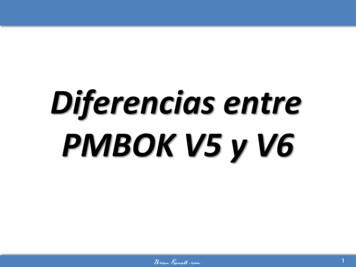
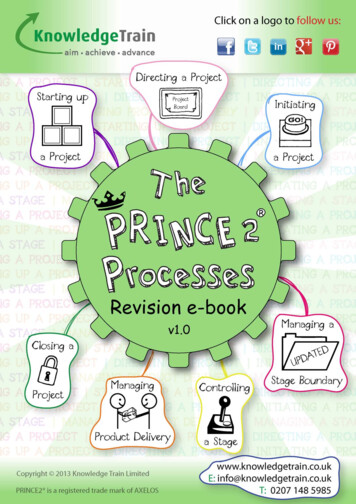
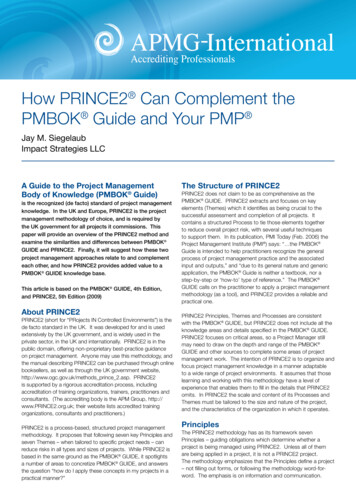
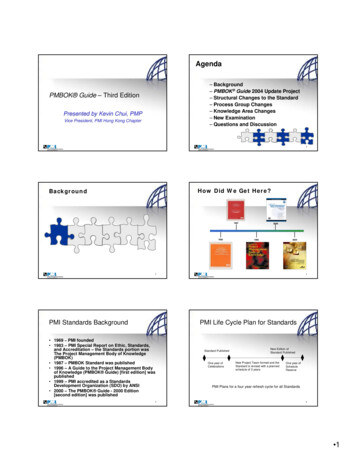
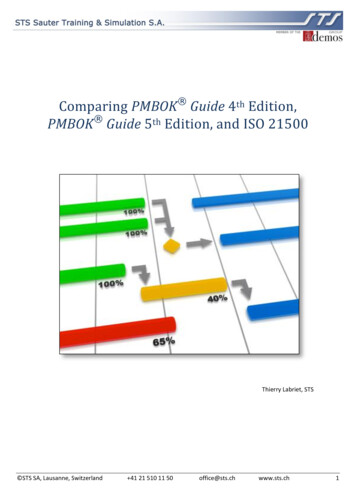
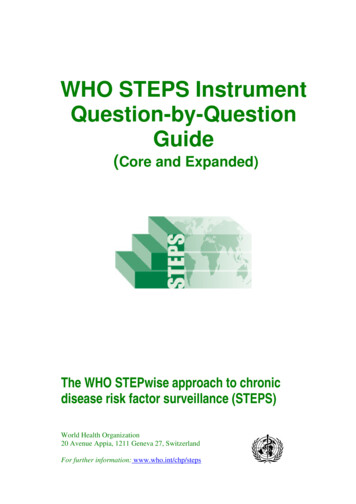
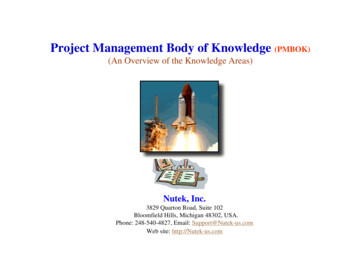
![Managing successful projects with PRINCE2 [PDF] 6th ed.,](/img/18/1-principles.jpg)
